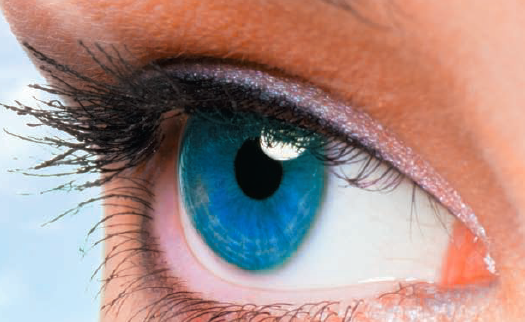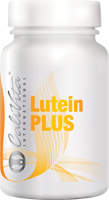Lutein Plus
Before outlining the most frequent eyeproblems and conveying professional advice, let us begin with a brief summary of the structure and functioning of the eye. Macula lutea is an approximately 6 mm area occupying the middle part of the retina, which is the place of sharp vision. The Retina forwards an image arriving to the eyes from an object, to the brain. Macula is the place we use principally during reading or working with something close to our eyes.
Due to the aging population, the incidence of macular degeneration in the elderly grows continuously. There are families where macular degeneration can be traced back to several generations. However, the development of the disease is determined by numerous factors, such as various environmental factors, diet, and UV radiation, among others. In developed countries, 50% of serious vision deterioration is caused by sclerosis of the eyeground. The fi rst symptom is usually the bending of the lines seen straight before. This is when reading ability, then recognition of faces worsens. In turn estimation of the distance or exact size of an object may cause problems, as well as being able to distinguish different shades of color. After the full development of the disease, in the center of our visual area we will see a large mist, and see sharply only on the peripheries.
In case of “dry” form of macular degeneration, we usually recommend a formula which contains the most important substances for the eye for example vitamins (vitamin A and C). Although we cannot expect the restoration of vision, its regular application slows down the rate of which the disease progresses.
At this point it makes sense to sum up what substances may be benefi cial for the health of our eyes. The first and maybe the most important “eye-protecting” substance is lutein, which is present in high concentration in the macula lutea of the eyes. Assumedly, Lutein off ers protection against powerful rays of light. The other such substance is zeaxanthin, which is also of basic importance to vision. These two substances we also call the guardians of vision. Vitamin A is indispensable for the structure of visual purple (rhodopsin), the light-sensitive substance of retina. In early stage, its defi ciency causes the so called night-blindness, when twilight or poor lighting causes vision disorder. There are some plant active ingredients which are also excellent “eye-protectors”. Accounts suggest that British pilots in World War II ate bilberries by the handful before night deployments, as its substances help the quick regeneration of retina cells. Bilberries contain fruit acids, tanning agents, vitamins, fl avonoids (mainly anthocyanosides), lots of iron, as well as vitamin A, D and C.
Lutein PLUS, the latest development of CaliVita® contains these excellent active ingredients in an individual formula, which greatly benefi ts our vision. One capsule daily, along with a healthy way of life, contributes to the preservation of the health of our eyes.
As an ophthalmologist, I recommend this product to everyone who:
• work s with computers or watches a lot of TV
• stays a lot in electrosmog
• keeps to a rigid diet
• has a family history of hereditary or other
kinds of eye disease
• to healthy people as an antioxidant
• considers clear vision to be important
Dr. Ildikó Kiss
Active ingredients of Lutein PLUS:
Lutein. . . . . . . . . . . . . . . . . . . . . . . . . . . . . . . . . . 6 mg
Zeaxantin . . . . . . . . . . . . . . . . . . . . . . . . . . . . 0,5 mg
Vitamin C . . . . . . . . . . . . . . . . . . . . . . . . . . . . . 50 mg
Vitamin A (retinol-acetate) . . . . . . . . . . . 0,20 mg
Bilberry Fruit extract (std. 25% anthocyanosides) . . . . . . . . . . . . 25 mg


